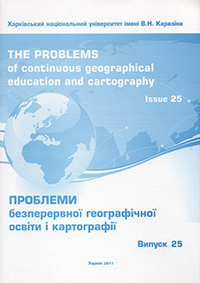Coherence of land surface layout as intangible environmental resource (Vooremaa landscape protection area, Estonia)
Abstract
Vooremaa Landscape Protection Area provides a specimen of native Estonian agricultural lands, alternating with picturesque moraine lakes. The overall visual environment within this area was basically changed by glacial agents and, hereafter, by cultural activities, such as crop farming. Topography consists of about 100 drumlins (some of them are cultivated), as well as depressions, filled with lakes and covered by forests and grasslands. A rich combination of the mentioned factors determined the study area selection. There was accepted, that the harmony, or pleasing organization of distinguishable units of visual environment (with no attention to their colours or textures, but regarding their geographical meaning only), depends on the system effect: the more complexity of the overall system exceeds the algebraic sum of the complexity of its components, the more its organization does. In this way, some developments of information theory could be applied to the analysis of visual environment (from top view), similarly to the analysis of the text (considering units of land relief, land cover, and land cover relief, or a land surface in total, as the symbols of some alphabet, and their diversity within the floating circle – as words, consisting of the symbols). Since mentioned notions of organization and harmony are frequently implied in the concept of landscape coherence, the latter term was used as a fixed and well-known one in the landscape and environmental aesthetics. Hartley’s formula was used to compute the coherence of the land surface layout and the respective regionalization within the study area and surroundings. The effectiveness of the proposed method for representation of visual harmony was non-rigorously verified with transect of Google Street View panoramic photo series, while everyone is welcomed to use the Google Street View to compare the presented results with his own conclusions. There was found, that the proposed index coherence of land surface layout reflects the organization and visual harmony of the scene. A colouristic aspect of the visual harmony of the environment for the same study area was taken into consideration in another article, prepared for Bulletin of V. N. Karazin Kharkiv National University.
Downloads
References
2. Antrop, M. (2000). Geography and landscape science. Belgeo. Revue belge de géographie, 1-2-3-4, 9-36. Available at: http://dx.doi.org/10.4000/belgeo.13975
3. Casalegno, S., Inger, R., DeSilvey, C., etc. (2013). Spatial covariance between aesthetic value & other ecosystem services. PloS one, 8(6). Available at: http://journals.plos.org/plosone/article?id=10.1371/ journal.pone.0068437
4. Dupont, L., Antrop, M., Van Eetvelde, V. (2014). Eye-tracking analysis in landscape perception research: Influence of photograph properties and landscape characteristics. Landscape Research, 39(4), 417-432. Available at: https://biblio.ugent.be/publication/4304116/file/ 5675458.pdf
5. Granö, J.G. Paasi, A., ed. (1997). Pure geography. Baltimore, MD: Johns Hopkins University Press, 194.
6. Kaplan, R., Kaplan, S. (1989). The experience of nature: a psychological perspective. Cambridge: Cambridge University Press, 370.
7. Kaymaz, I.C. (2012). Landscape perception. Rijeka: InTech, 251-277.
8. Lutsenko, E.V. (2002). Conceptual principles of the system (emergent) information theory and its application for the cognitive modelling of the active objects (entities). Artificial Intelligence Systems, IEEE International Conference (ICAIS 2002), 268-269. Available at: http://ieeexplore.ieee.org/abstract/document/1048109/
9. Markov, Ju.G. (1982). Funkcional’nyj podhod v sovremennom nauchnom poznanii [The functional approach in contemporary scientific cognition]. Novosibirsk: Nauka, 255.
10. Rodoman, B.B. (2007). Geografija, rajonirovanie, kartoidy [Geography, zoning, cartoids]. Smolensk: Ojkumena, 368.





